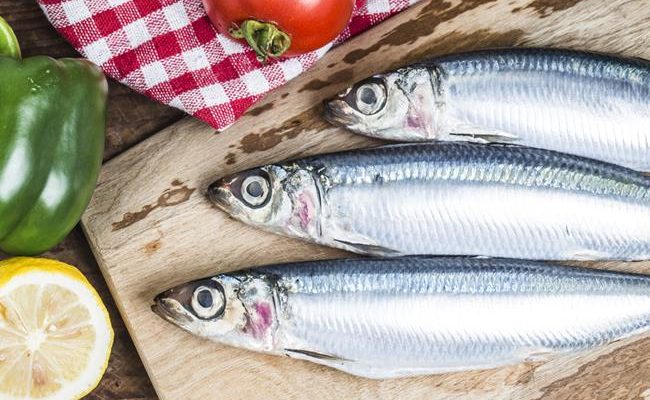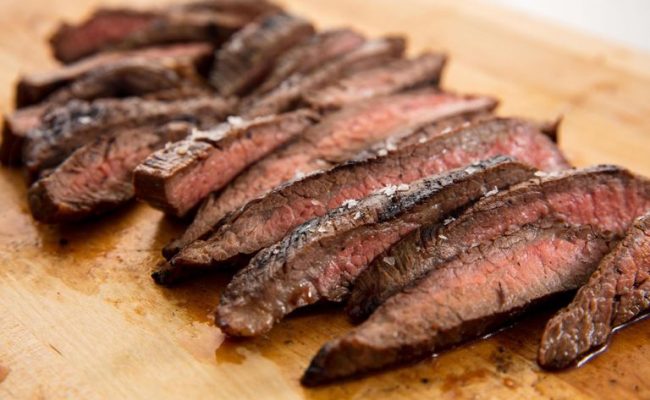
Questions of red meat, health and how much you should eat are swirling around in the media and health reports. Some recent studies have shown a link between red meat consumption and mortality, and some studies continue to suggest limiting red meat intake is beneficial for heart health.
There is also a concern for cancer risk and red meat intake, especially when using a high heat method for cooking and for intake of processed red meats. Processed red meats include: hot dogs, salami, ham, bacon and sausage.
So what is the good news about red meat?
Lean red meat can be a nutrient dense source of B vitamins, protein, iron, selenium and zinc. Eating lean meals higher in protein could be advantageous for weight loss, so eating the right kind and portion size of red meat could fit into a balanced healthy diet.
Red meat is also a good source for iron that provides heme iron which is absorbed well in the body. People at risk or who have iron deficiency could benefit from eating foods high in iron like red meat.
A general tip for eating red meat is to think of it as a smaller side item for a meal, not the main focus.
Limiting intake of processed red meat as much as possible is recommended along with cooking red meat at lower temperatures.
Following these tips as well as choosing leaner cuts of meat and grass fed can help make red meat as healthy as possible.
See also: Is red meat bad for weight loss?
Eat smaller portions
Instead of making meat the main center of a meal, make meat more a side item. Try filling up half your plate with fruits and vegetables and keeping meat to no more than ¼ of your plate at meal times.
A typical steak portion when eating out can easily be over 6 ounces. However, the recommended portion of meat at a meal is 3 ounces, which is about the size of a small bar of soap or a deck of playing cards.
If you eat red meat most nights of the week, try cutting back your portions. What you would normally eat in one sitting, make it last for 2-3 sittings.
Bump up your portion size of veggies, legumes and whole grains to replace the missing meat.
How much red meat should you have in a week?
According to the American Institute for Cancer Research (AICR) (1), you should eat no more than 18 ounces of cooked red meat per week and avoid processed red meats. This recommendation is to lower risk for cancer.
Pick the leanest choices
Leaner cuts of red meat are the healthier choices because they are lower in calories, fat and cholesterol.
A lean cut of red meat is considered to have less than 10 grams of fat for about 100 gram serving, and extra lean means less than 5 grams of fat per 100 gram serving (2).
The leanest cuts of beef include: round roast and top sirloin steak. Cutting away visible fat before cooking can also help lower fat content.
Don’t use high heat
A concern with cancer risk and red meat intake is the temperature of heat used for cooking. When meat is cooked on high heat like with grilling or pan frying, HCAs and PAHs form in the meat.
These compounds are considered a carcinogen when we eat them. According to the National Cancer Institute (3), research studies have shown an association between high consumption of well done, fried or barbecued meats and an increased risk for certain cancers.
A healthier way to cook red meat to lower formation of HCAs and PAHs is to use a lower heat when cooking and avoid charring meat.
High heat that can start the formation of HCAs and PAHs can be considered heat over 300 degrees Fahrenheit.
Alternative cooking methods besides grilling or pan frying at high heat can include braising or roasting.
Grass fed
There is some debate over whether grass fed meat is healthier than grain fed. Grass fed meats do have a higher amount of omega 3’s, but some health experts suggest it isn’t that much higher than grain fed.
In general, grass fed meats are usually leaner than grain fed meat (4).
Most people don’t get enough omega 3’s in their diet, so choosing foods higher in omega 3’s, even if it may be only slightly higher, can help your body get enough of this anti-inflammatory nutrient.
Grass fed meat has also been shown to have higher levels of vitamin A and vitamin E compared to grain fed meat.
This may be a reason why grass fed meats can have a different color to them, especially their fat color.
Avoid processed red meat products
For cancer risk and overall health, it is recommended to limit your intake of processed red meats. It is best to avoid these foods or eat very rarely.
According to Harvard Health (5), research results from over 1 million people suggest eating processed red meat can increase risk of heart disease and type 2 diabetes.
In this study, eating unprocessed red meat did not increase risk for heart disease.
Processed meat is higher in fat, cholesterol, salt and preservatives; this is why researchers think processed red meat has a different impact on health compared to unprocessed meat.
Conclusion
If you want to eat red meat, it is best to enjoy it moderately using smaller portions. The AICR suggests getting no more than 18 ounces per week of red meat and avoiding processed red meats.
Processed red meats can increase risk for certain cancers, heart disease and diabetes.
Choosing lean red meat and grass fed are other considerations for making red meat as healthy as possible.
Grass fed meats can have higher omega 3’s and are in general leaner compared with grain fed red meat.











